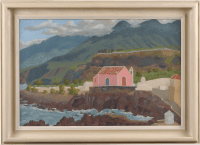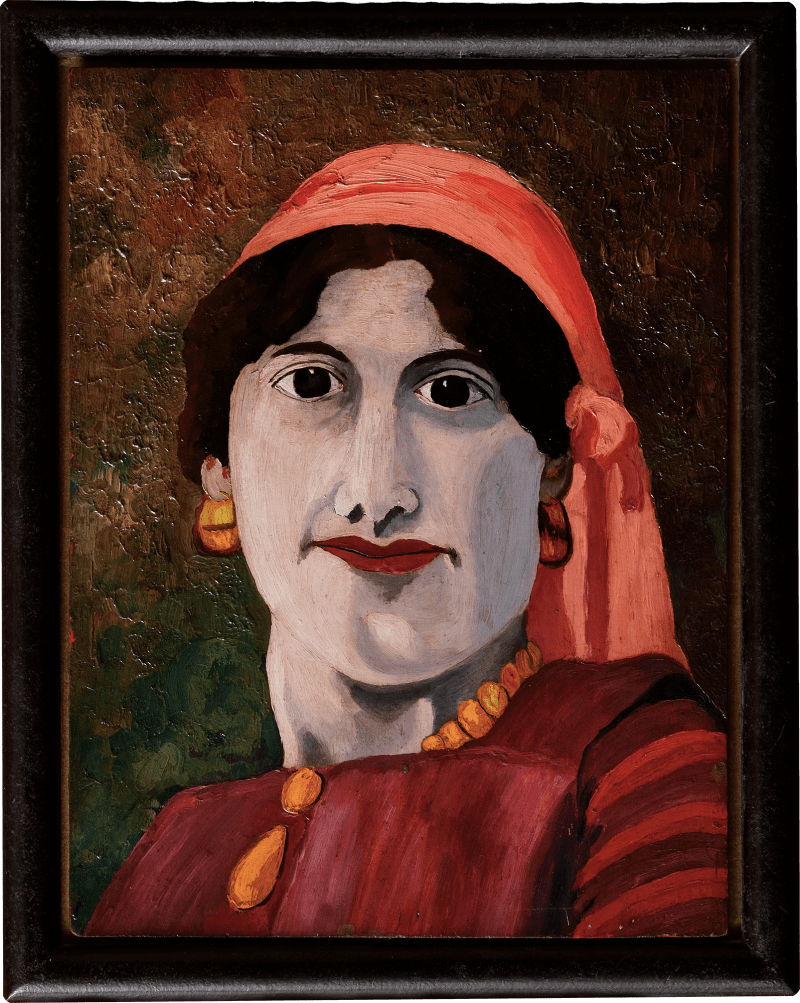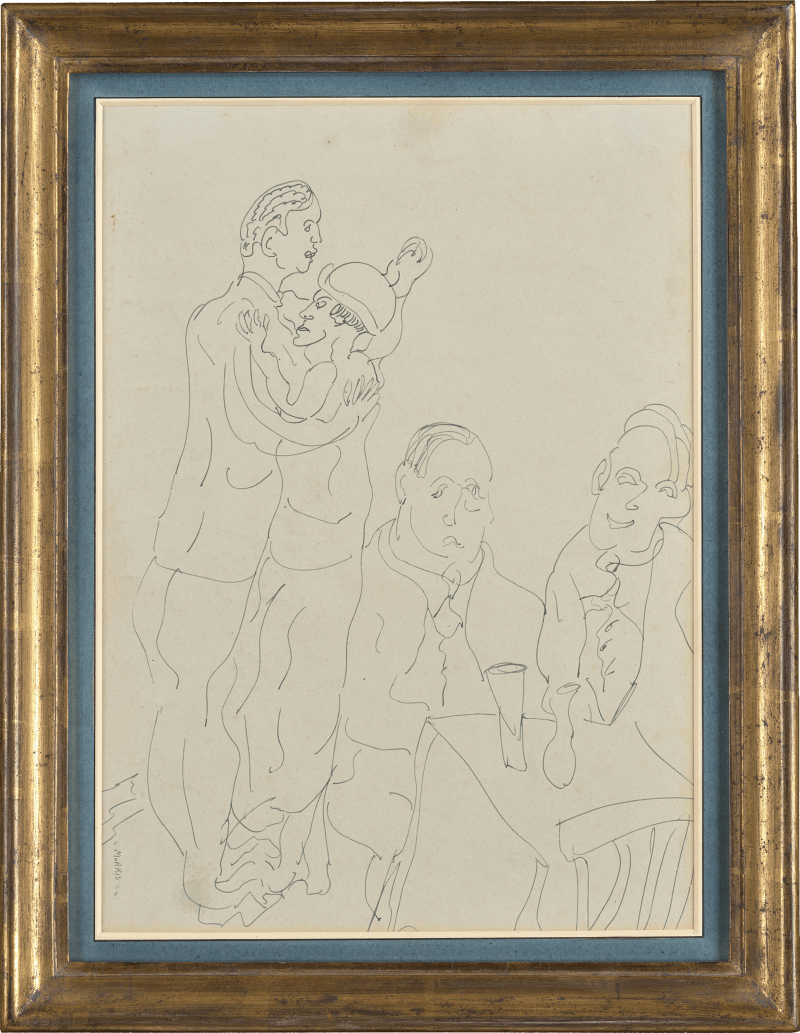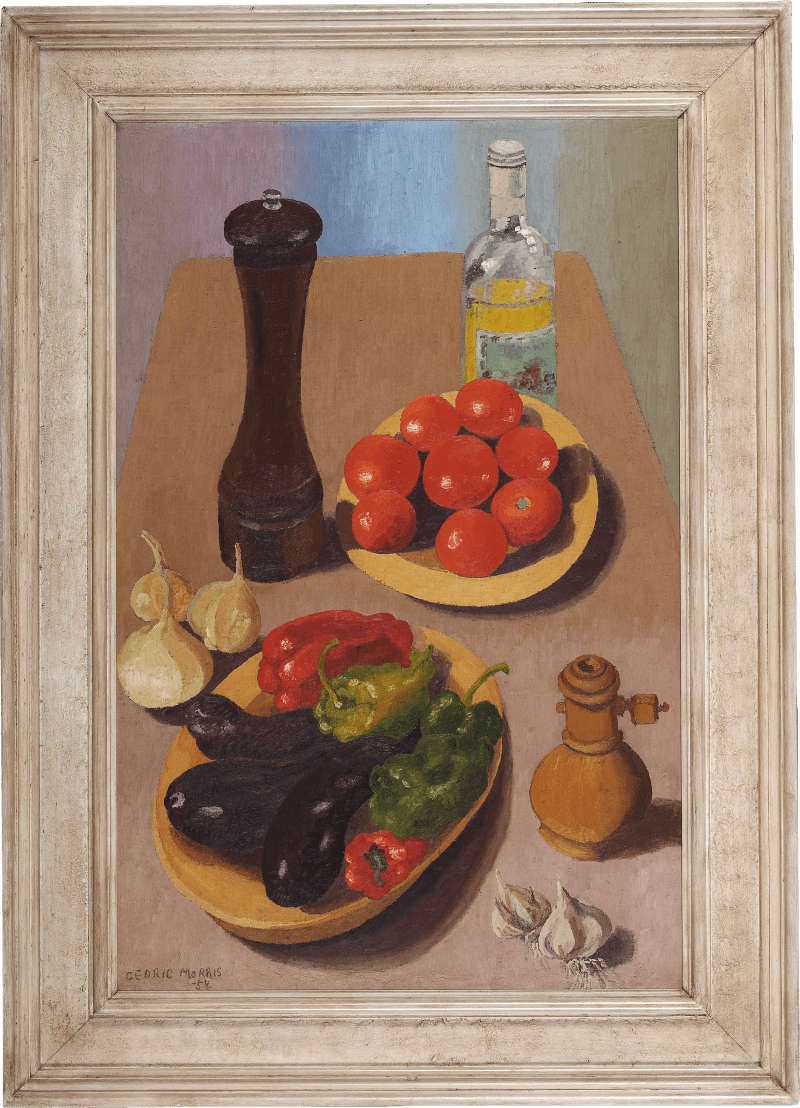When the East Anglian School of Painting and Drawing closed for the year in October 1956, Morris embarked on a trip abroad. Sailing from Southampton Port on the 8th December, he steadily made his way across the Atlantic Ocean down the coasts of France, Spain, Portugal and Morocco to reach Las Palmas, the capital of Gran Canaria. Once arrived, he quickly moved on to the island of Tenerife in order to reconvene with friend Nigel Scott, with whom he frequently travelled at this date.
Whilst staying in Tenerife, Morris painted the present view, depicting a secluded part of the rugged coastline. The pair soon grew weary of the throngs of tourists that had flocked to the island to soak up the autumn sun. From Tenerife, they took a Victorian steamboat to the more isolated island of La Palma, situated in the North Western corner of the Canary Islands. Prior to this, however, Morris managed to complete a particularly striking composition...
When the East Anglian School of Painting and Drawing closed for the year in October 1956, Morris embarked on a trip abroad. Sailing from Southampton Port on the 8th December, he steadily made his way across the Atlantic Ocean down the coasts of France, Spain, Portugal and Morocco to reach Las Palmas, the capital of Gran Canaria. Once arrived, he quickly moved on to the island of Tenerife in order to reconvene with friend Nigel Scott, with whom he frequently travelled at this date.
Whilst staying in Tenerife, Morris painted the present view, depicting a secluded part of the rugged coastline. The pair soon grew weary of the throngs of tourists that had flocked to the island to soak up the autumn sun. From Tenerife, they took a Victorian steamboat to the more isolated island of La Palma, situated in the North Western corner of the Canary Islands. Prior to this, however, Morris managed to complete a particularly striking composition of Tenerife devoid of all human activity. Despite the overwhelming gathering of visitors, Morris purposefully decided upon an expression of the island as distinct from its swarms of holidaymakers. In almost all examples of Morris’s travel paintings, there is a conscious commitment to landscape seen without human presence. Instead, uninhabited dwellings often take up dominant positions within Morris’s travel compositions thereby reinforcing the sense of human presence that is, for a moment, absent from view.
In the current work a small building, perhaps a chapel, sits imposingly within the landscape, further emphasised by the striking hue of pink painted upon its walls. This colour provides a dramatic contrast in an otherwise muted palette of browns, blues and greens. In addition, the imposing flatness of the building is juxtaposed with the irregular and organic structures formed by the rocks below. Morris exploits these varying textures to great effect in his only work executed on Tenerife in 1956.
![Inscribed ‘Teneriffe [sic] CM 56’ verso Oil on canvas 20 x 30 in. (55.5 x 76 cm)](https://artlogic-res.cloudinary.com/w_1680,h_1680,c_limit,f_auto,fl_lossy,q_auto:good/artlogicstorage/philipmouldgallery/images/view/1af7dddcfad8afa0825f844c3dfa63b8p/philipmould-company-cedric-morris-tenerife-the-canary-island-1956.png)
![Inscribed ‘Teneriffe [sic] CM 56’ verso Oil on canvas 20 x 30 in. (55.5 x 76 cm)](https://artlogic-res.cloudinary.com/w_1680,h_1680,c_limit,f_auto,fl_lossy,q_auto:good/artlogicstorage/philipmouldgallery/images/view/91dcb841b0bd77cbc61eee6fddfb6567p/philipmould-company-cedric-morris-tenerife-the-canary-island-1956.png)











